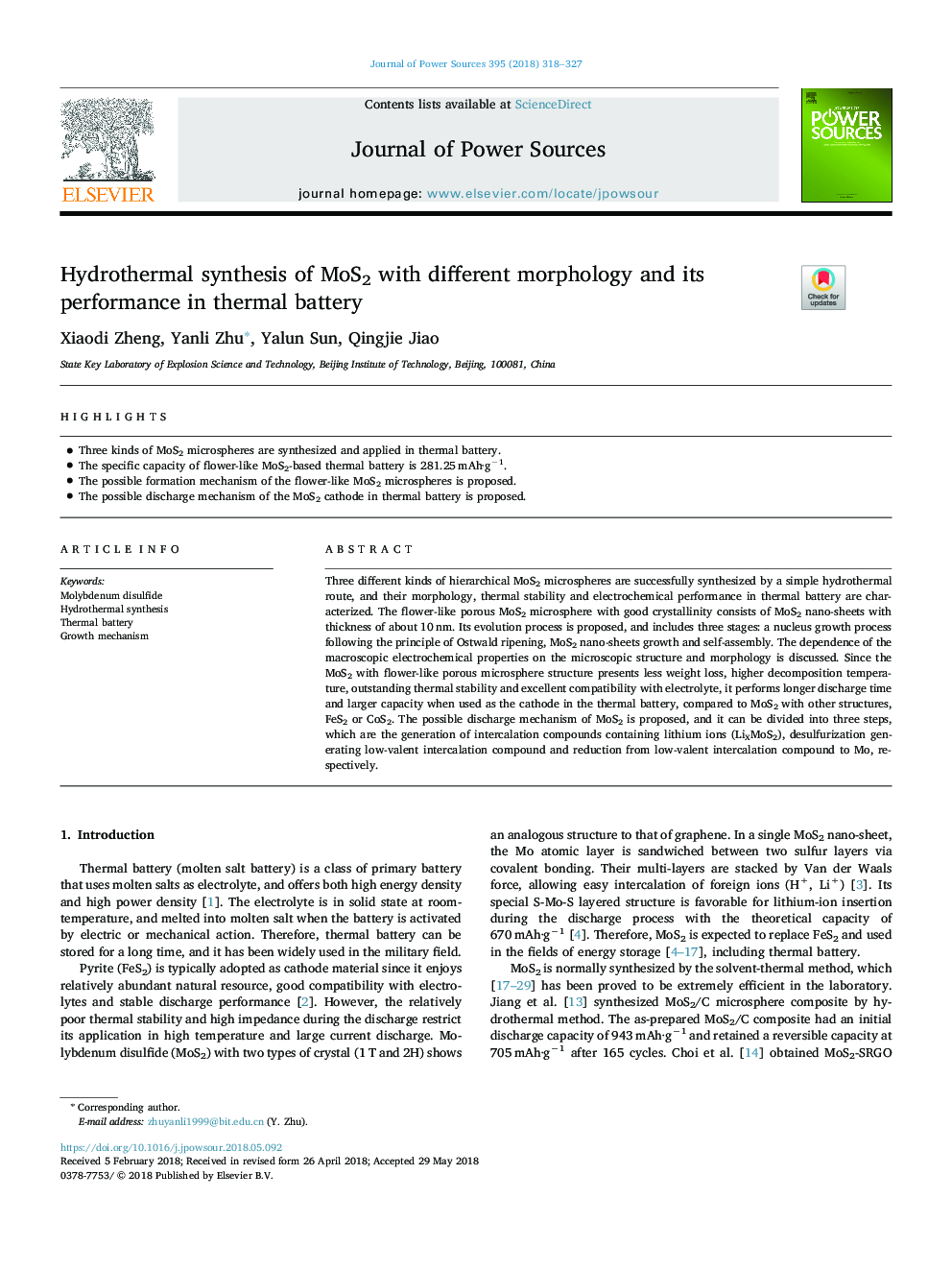| Article ID | Journal | Published Year | Pages | File Type |
|---|---|---|---|---|
| 7724979 | Journal of Power Sources | 2018 | 10 Pages |
Abstract
Three different kinds of hierarchical MoS2 microspheres are successfully synthesized by a simple hydrothermal route, and their morphology, thermal stability and electrochemical performance in thermal battery are characterized. The flower-like porous MoS2 microsphere with good crystallinity consists of MoS2 nano-sheets with thickness of about 10â¯nm. Its evolution process is proposed, and includes three stages: a nucleus growth process following the principle of Ostwald ripening, MoS2 nano-sheets growth and self-assembly. The dependence of the macroscopic electrochemical properties on the microscopic structure and morphology is discussed. Since the MoS2 with flower-like porous microsphere structure presents less weight loss, higher decomposition temperature, outstanding thermal stability and excellent compatibility with electrolyte, it performs longer discharge time and larger capacity when used as the cathode in the thermal battery, compared to MoS2 with other structures, FeS2 or CoS2. The possible discharge mechanism of MoS2 is proposed, and it can be divided into three steps, which are the generation of intercalation compounds containing lithium ions (LiXMoS2), desulfurization generating low-valent intercalation compound and reduction from low-valent intercalation compound to Mo, respectively.
Related Topics
Physical Sciences and Engineering
Chemistry
Electrochemistry
Authors
Xiaodi Zheng, Yanli Zhu, Yalun Sun, Qingjie Jiao,
